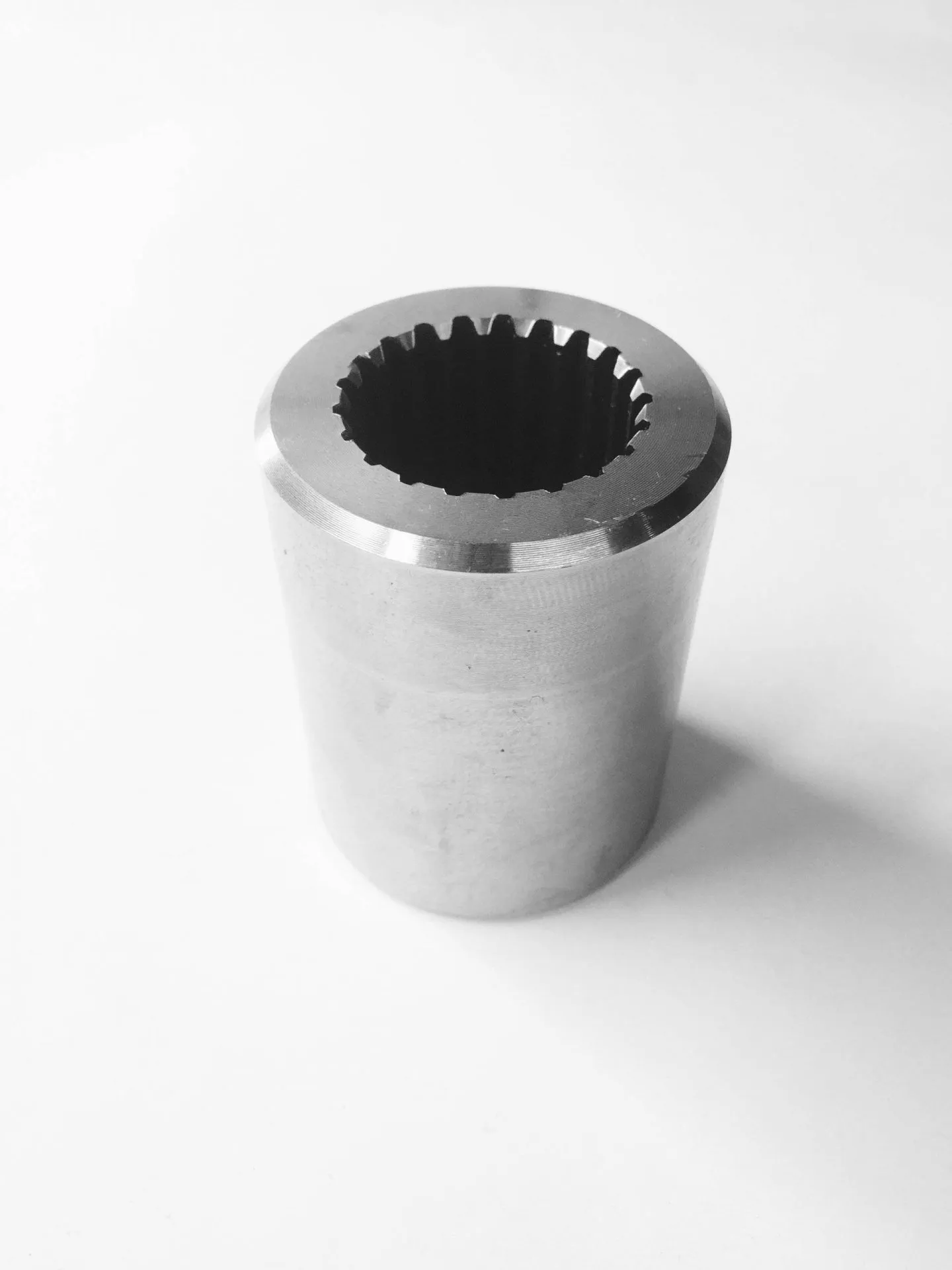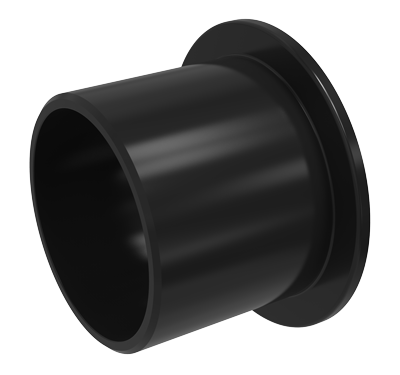
Are there specific guidelines for recycling or disposing of nylon bushings at the end of their life cycle?
Yes, there are specific guidelines for recycling or disposing of nylon bushings at the end of their life cycle. Here are some considerations:
1. Recycling:
– Nylon bushings, being made of a thermoplastic material, are generally recyclable. However, the specific recycling guidelines may vary depending on the composition of the nylon and the recycling facilities available in your area.
– Check with local recycling centers or waste management authorities to determine if they accept nylon bushings for recycling. They can provide information on the collection methods, sorting requirements, and any specific instructions for preparing the bushings for recycling.
– It’s important to separate nylon bushings from other materials and ensure they are clean and free of contaminants before recycling. Removing any metal inserts or other components attached to the bushings can facilitate the recycling process.
2. Specialty Recycling Programs:
– In some cases, there may be specialty recycling programs or initiatives specifically designed for industrial components like nylon bushings. These programs focus on recycling materials that are commonly used in industrial applications and may offer specialized recycling processes.
– Research and inquire about any such programs available in your region or industry. These programs may have specific collection points or partnerships with recycling facilities that can handle nylon bushings effectively.
3. Manufacturer Take-Back Programs:
– Some manufacturers or suppliers of nylon bushings may have take-back programs in place. These programs allow customers to return their used bushings to the manufacturer or supplier for proper recycling or disposal.
– Contact the manufacturer or supplier of the nylon bushings and inquire about any take-back programs they offer. They can provide guidance on the process, collection points, or specific instructions for returning the bushings.
4. Local Regulations and Guidelines:
– Be aware of any local regulations or guidelines regarding the disposal of nylon bushings. Different regions may have specific requirements or restrictions on the disposal methods for certain types of materials.
– Check with local environmental agencies or waste management authorities to understand the regulations in your area. They can provide information on proper disposal methods, landfill restrictions, or any hazardous waste classification that may apply to nylon bushings.
5. Reuse or Repurpose:
– Instead of recycling or disposing of nylon bushings, consider exploring opportunities for reuse or repurposing. Depending on their condition and functionality, nylon bushings can potentially be used in other applications or donated to organizations that can utilize them.
– Connect with local community organizations, educational institutions, or makerspaces that may have a need for industrial components like nylon bushings. They may accept donations or provide guidance on how to repurpose the bushings effectively.
It’s important to follow the guidelines and regulations in your specific region when recycling or disposing of nylon bushings. By doing so, you can ensure proper waste management, minimize environmental impact, and contribute to sustainability efforts.

Can I find information on the compatibility of nylon bushings with different shaft materials?
If you are looking for information on the compatibility of nylon bushings with different shaft materials, here’s a detailed explanation:
1. Manufacturer Documentation:
– The best source of information regarding the compatibility of nylon bushings with specific shaft materials is the documentation provided by the manufacturer of the nylon bushings. Manufacturers typically offer technical datasheets, product catalogs, or application guides that provide details on the recommended shaft materials for their nylon bushings.
– Consult the manufacturer’s documentation and look for sections that discuss shaft material compatibility or provide guidelines on suitable shaft materials to use with their nylon bushings. These resources may outline specific recommendations or highlight any limitations or restrictions regarding shaft material compatibility.
2. Material Compatibility Charts:
– Some manufacturers or industry organizations provide material compatibility charts or databases that can help you assess the compatibility of different materials, including nylon and various shaft materials. These charts typically indicate whether a particular combination of materials is compatible, incompatible, or requires additional considerations.
– Search for material compatibility charts or databases specific to nylon bushings and shaft materials. These resources may be available online or provided by industry associations, material suppliers, or engineering organizations. Cross-referencing the nylon material and the specific shaft material can provide insights into their compatibility.
3. Engineering Handbooks and References:
– Engineering handbooks and references can be valuable sources of information on material compatibility. Look for engineering handbooks or reference manuals that cover the topic of tribology (the study of friction, wear, and lubrication) or materials engineering. These references often include information on the compatibility of different materials, including nylon and various shaft materials.
– Visit libraries or online platforms that provide access to engineering literature, such as technical journals, textbooks, or databases. Search for keywords related to material compatibility, nylon bushings, and shaft materials to find relevant information.
4. Consult with Experts:
– If you require more specific or specialized information on the compatibility of nylon bushings with different shaft materials, consider consulting with experts in the field of materials engineering or mechanical engineering. These professionals can provide insights based on their knowledge and experience.
– Contact manufacturers or suppliers of nylon bushings and explain your specific application requirements and the shaft materials you are considering. They may be able to offer guidance or recommendations based on their expertise and familiarity with their products.
– Engage with professional engineering organizations or forums where you can seek advice from qualified engineers or subject matter experts. These platforms can provide a collaborative environment for discussing material compatibility and obtaining insights from professionals in the field.
By referring to manufacturer documentation, material compatibility charts, engineering handbooks, and consulting with experts, you can gather information on the compatibility of nylon bushings with different shaft materials. Remember that material compatibility is a complex subject, and it is crucial to consider other factors such as operating conditions, loads, and environmental factors when selecting the appropriate combination of nylon bushings and shaft materials for your specific application.

What are the advantages of using nylon bushings over other materials in mechanical applications?
When it comes to mechanical applications, using nylon bushings offers several advantages over other materials. Here’s a detailed explanation:
1. Self-Lubricating Properties:
– Nylon bushings have inherent self-lubricating properties, which reduce the need for additional lubrication. The low friction coefficient of nylon helps in smooth and efficient operation, reducing wear and extending the lifespan of the bushing and the mating parts.
– Self-lubricating nylon bushings are particularly beneficial in applications where frequent maintenance or lubrication is impractical or challenging, such as in hard-to-reach areas or in environments with limited access.
2. Excellent Wear Resistance:
– Nylon bushings have excellent wear resistance, making them suitable for applications with high loads or repetitive motion. They can withstand continuous contact and friction without significant wear or degradation.
– The inherent toughness and durability of nylon make it resistant to abrasion, allowing the bushings to maintain their performance and dimensional stability over time.
3. Low Coefficient of Friction:
– Nylon bushings have a low coefficient of friction, which minimizes the resistance to motion. This low friction characteristic helps reduce energy consumption, minimize heat generation, and improve operational efficiency.
– The low friction coefficient of nylon bushings also contributes to smoother and quieter operation, reducing noise and vibration in mechanical systems.
4. Corrosion Resistance:
– Nylon is inherently resistant to corrosion from moisture, chemicals, and most industrial environments. This corrosion resistance makes nylon bushings suitable for applications where exposure to harsh conditions or corrosive substances is a concern.
– Unlike metal bushings that may require additional protective coatings or regular maintenance to prevent corrosion, nylon bushings can withstand corrosive environments without compromising their performance.
5. Lightweight and Cost-Effective:
– Nylon is a lightweight material, which can contribute to overall weight reduction in mechanical systems. This is particularly advantageous in applications where weight is a critical factor, such as aerospace or automotive industries.
– Nylon bushings are often cost-effective compared to other materials, such as bronze or stainless steel. They offer a balance of performance and affordability, making them a cost-efficient choice for various mechanical applications.
6. Electrical Insulation:
– Nylon is an excellent electrical insulator, providing insulation and preventing electrical current flow between mechanical components. This property is beneficial in applications where electrical conductivity needs to be minimized, ensuring safety and preventing electrical interference.
– Nylon bushings can help isolate and protect electrical systems or components in machinery, reducing the risk of electrical shorts, arcing, or damage.
By leveraging the self-lubricating properties, excellent wear resistance, low coefficient of friction, corrosion resistance, lightweight nature, cost-effectiveness, and electrical insulation properties of nylon bushings, mechanical applications can benefit from improved performance, reduced maintenance requirements, and extended operational lifespan.


editor by CX 2024-04-16